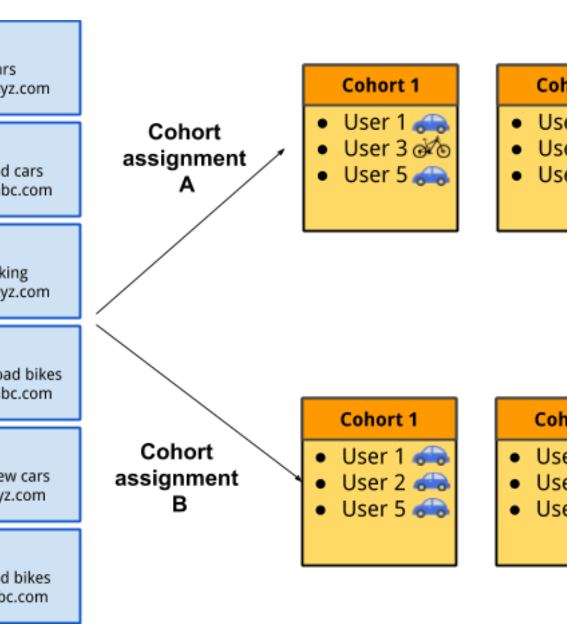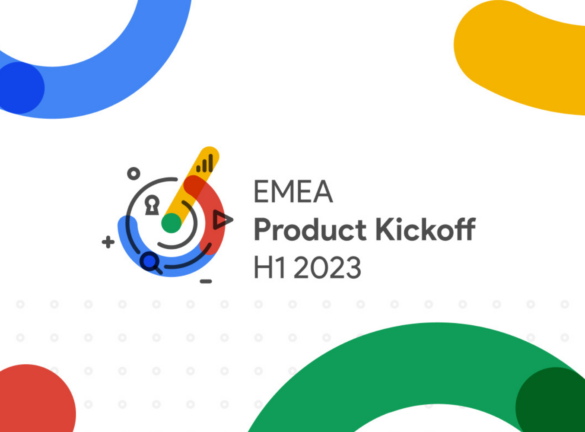
Privacy in a post-cookie world: Google’s FLoC explained
In January 2020, Google announced that by 2022 they would phase out support for third-party cookies in Chrome. While other ad tech companies are planning to replace third-party cookies with alternative user-level identifiers, in March 2021 Google explicitly stated that once third-party cookies are phased out, they will not build alternate identifiers to track users as individuals.
The future of targeting: Google’s FLoC
Advertisers have been waiting in great anticipation for Google to shed light on the future of targeting. In a recent announcement, Google stated that targeting based on individualised tracking would be replaced by FloC (Federated Learning of Cohorts), which would function to group people with similar interest into clusters, hiding individuals “in the crowd” and providing a more private approach. For advertisers, this solution would still offer the opportunity to serve personalised ads.
An initial experiment indicated that advertisers using FLoC’s generated a nearly 350% improvement in ad recall and an almost 70% improvement in precision over a random assignment of users to cohorts. Google ad’s team tested the new FLoC mechanism and compared it to cookie-based audiences and they reported a 95% efficiency. However, they alerted that results can vary based on how strong each cluster is and the target advertisers are aiming for.
Generally speaking, it is expected that moving from interest-based targeting to cohort-based targeting will negatively impact performance. This is because a level of granularity is taken, it would reduce the audience pool and reduce the understanding of consumers in each cluster.
Google summarised the differences between the FLoC mechanism and interest-based audiences nicely in their latest whitepaper.
They demonstrated that ‘The more users share a cohort id, the harder it is to use this signal to derive individual user’s behaviour from across the web. On the other hand, a large cohort is more likely to have a diverse set of users, thus making it harder to use this information for fine-grained ads personalization purposes’. ‘An ideal cohort assignment is one that generates cohorts by grouping together a large number of users interested in similar things’ (see image below).

Google’s examples demonstrated how two different cohort assignments with the same anonymity properties can yield different utility results. The image shows six users split into cohorts in two different ways. Assignment A creates a cohort of xyz.com visitors and another of abc.com visitors. Assignment B generates a cohort of car enthusiasts and one of bike enthusiasts. Even though both achieve k-anonymity for k=3. Assignment B is more likely to be effective for interest-based advertising.’
Conversion Tracking
In early April, Google released more details on how their latest proposals could solve questions around conversion measurement. Prioritising user privacy but still thinking about how websites can measure important events on-site, Google’s API will offer the capability of reporting on both event-level and aggregated information.
Chetna Bindra, Group Project Manager at Google stated that ‘event-level information is helpful when businesses need data to be more granular, such as deciding how much to bid on impressions or modelling conversions. Aggregated information is important for summarizing campaign performance, like reporting total conversion value or return on investment.’.
For view-through conversion measurement, Google proposes that advertisers use the event-level capability of the API as it would provide more granular detail. To ensure user’s privacy, the API would limit the amount of data shared on each conversion and add noise to the data. However, when looking at the total number of view-through conversions, the API’s aggregate reporting capability would be more suitable as it would give more accurate information on key metrics, without compromising privacy.
When it comes to cross-device conversion measurement, the API’s event-level would enable advertisers to report conversions that happened within the website and are related to ad views or clicks that happened on a different device. This is only possible if users are signed into their browsers across devices.
Google is investing in aggregation, anonymization, on-device processing and other privacy-preserving technologies to enable more user privacy while still giving advertisers an alternative way of effective targeting.
The industry’s reaction to Google’s solution
DuckDuckGo announced their plans in blocking Google’s FLoC technology from the DuckDuckGo search engine and Chrome browser extension. Despite FLoC being a technology developed by Google with the purpose of increasing user privacy, DuckDuckGo is concerned that all Chrome users are forced to opt into the FLoC tracking.
Other browsers such as Firefox, Edge and Safari also shared initial concerns around the non-consented user identity signal imposed by the FLoC mechanism but they still haven’t officially confirmed if they will block the technology.
WordPress is the most recent company to share its view on Google FLoC. The company released a proposal that treats FLoC as a security concern.
Is FLoC the only alternative to decrease reliance on 3rd party cookies?
Other ad tech companies have begun to create alternative solutions in order to decrease reliance on third-party cookies. For example, Unified ID 2.0 created by The Trade Desk is a single sign-on solution for users to log in to different publisher websites. According to The Trade Desk, when a consumer logs in to a website with their email address, an identifier is created based on a hashed and salted, or anonymized version of that email. The identifier regularly regenerates itself, ensuring security. At the point of login, the consumer gets to see why the industry wants to create this identifier and understand the value exchange of relevant advertising, in simple terms (unlike today’s cookies). They also get to set their preferences on how their data is shared. If a user logs in through a publisher that is linked with UID 2.0, their unique identifier is shared across those publishers.
Google stated they will not support hashed email solutions such as UID 2.0.
Google’s FLoC: A viable alternative?
Google’s FLoC technology seems to offer an alternative for a more private web while not taking advertisers the ability to target relevant audiences. However, despite Google’s effort in improving users’ privacy through the FLoC mechanism, not giving users the option of opting out of the tracking seems contradictory.
Google Chrome is currently the most used browser worldwide with a 64% market share giving the company a big advantage when it comes to tracking decisions like this. However, the view and concerns raised by several technology companies might pressure Google to change their current approach when it comes to the new FLoC technology and their approach to users opt-in.
Other Sources
Google: Helping publishers thrive in today’s privacy environment
Chromium Blog: Building a more private web
Google: A more privacy-first web
Digiday: Google’s privacy plan brings changes but not as many as marketers think
SE Journal: DuckDuckGo announces plans to block Google’s FLoC
Pad Squad: Replacing the Cookie
Github: FLoC Whitepaper Google






